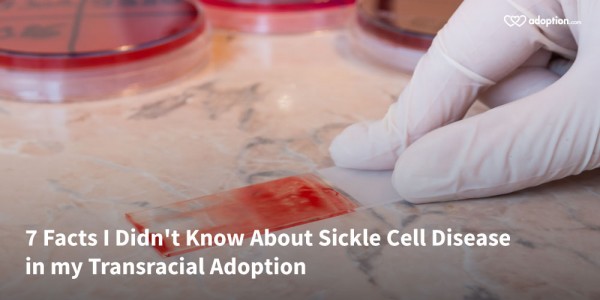September is Sickle Cell Disease Awareness Month. A disease I gave little thought to until I adopted a child susceptible to the disease. As the most common inherited blood disorder in the United States, Sickle Cell Disease affects 90,000 to 100,000 Americans. It occurs among about 1 out of every 500 African-American births and about 1 out of every 36,000 Hispanic-American births.
During the adoption process, like most people, we thought happy thoughts about life with a new family member. We didn’t care about the race or color of the child we adopted and gave little thought to the health risks more prevalent in races other than our own. Today, as the white mother of a child who is African-American and Hispanic American, the statistics for Sickle Cell Disease surprise to me. “Most commonly inherited blood disorder” sounds like the sort of medical condition that would be more recognized among the general public.
The term I was most familiar with is sickle cell anemia, putting my focus on anemia, the tiredness, the weakness and that-run down look people with anemia can get. The disease is actually called Sickle Cell Disease.
The disease gets its name from the shape of the blood cells created by the disease. Healthy red blood cells are round, and they move through small blood vessels to carry oxygen to all parts of the body. In someone who has Sickle Cell Disease, the red blood cells look like a C-shaped farm tool called a “sickle.” The sickle cells die early, which causes a constant shortage of red blood cells. Also, when they travel through small blood vessels, they get stuck and clog the blood flow. It has far more widespread affects than I realized.
A little research into the disease uncovered many details I don’t know.
- Because Sickle Cell Disease is a blood disorder, complications can occur in any part of the body.
- Primary symptoms of sickle cell disease are anemia, pain episodes (or “crises”), and infections.
- More severe complications include: pneumonia, acute chest syndrome, stroke, organ damage, and abnormally high pressure within the lungs or respiratory system that can lead to progressive heart failure.
- When a child is born with sickle cell disease, it’s impossible to predict which problems will develop, when they will start, or how bad they will be.
- People can have sickle cell trait without having the disease. Those people may never know that they carry the gene.
- Parents and caregivers of children with Sickle Cell Disease should work closely with teachers and others at school to ensure that a child with Sickle Cell is getting the support needed to be watchful of the signs of a crisis.
- People with Sickle Cell are susceptible to emotional stress and depression caused by the unpredictable nature of the pain and the wide-ranging severity of health problems due to the disease.
To learn more about Sickle Cell Disease, see CDC Sickle Cell Disease and its National Resource Directory.

